Italian
baroque sculpture
Grand
Prince Ferdinando de' Medici (1663?713),
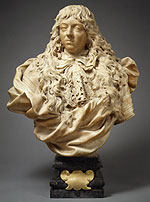
Portrait Bust, 17th century (ca. 1683?5)
Giovanni Battista Foggini (1652?725), Sculptor
Italian (Florence); Made in Florence, Italy
Marble; base of gray marble; H. (including base) 39 in. (99.1 cm)
Purchase, The Annenberg Foundation Gift, 1993 (1993.332.2)
Alternate Views
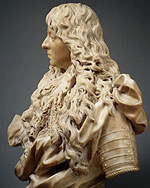


Bacchanal:
A Faun Teased by Children,
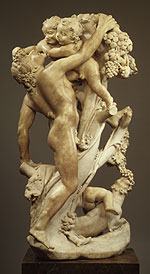
17th century (ca. 1616?7)
Gian Lorenzo Bernini (1598-1680), Sculptor
Italian (Rome); Made in Rome, Italy
Marble; H. 52 in. (132.1 cm)
Purchase, The Annenberg Fund Inc. Gift, Fletcher, Rogers,and
Louis
V.Bell Funds,
and Gift of J.Pierpont Morgan, by
exchange,1976 (1976.92)
Alternate Views
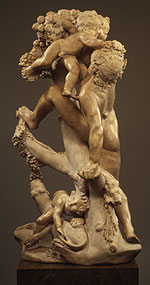
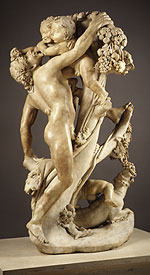

Presentation for Italian baroque sculpture.
I prepared two sculptures
in Italian baroque period. One is bacchanal : A faun teased by children made by
Gian Lorenzo Bernini, he was the herioc central figure in italian baroque
sculpture. The other is Grand Prince Ferdinando deíMedici made by Giovanini
Battista Foggini. (by the way) Medici family was famous for their wealth as a
trades man and banker.
Letís look at first
one. See page one. We can see here in the buoyant forms and cottony texture of
the bacchanal. This was the influence of his father, Pietro. However, the
liveliness and strongly accented diagonals are the distinctive contribution of
the young Gian Lorenzo. Although he made this work when he was about eighteen,
he already displayed what would become a lifelong interest in the rendering of
emotional and spiritual exaltation. The bacchanal reveals the young Berniniís
intensive study of bacchic subject matter.
And next page, this
sculpture is the bust of the elder son of Grand Duke Cosimo deíMedici. This
work, also, belongs to a series of compelling images representing members of the
Medici family. The dramatic, vigorous late baroque style reveals the influence
of Bernini and his followers on Foggoni. Ferninando is portrayed in his early
twenties. The artist captures his dreamy and sensitive nature, which radiates
from his handsome, regular feature. His face is framed by a mass of cascading
curls that merges with the lavish Venetian gros-point lace of his jabot and the
folds of his generous mantle. At the time the portrait was carved, Cosimo was
pressing the young prince to take a wife. Ferdinando married in 1689, but the
union did not produce an heir. When the prince predeceased his father, the
grand-ducal crown was passed to his brother Gian Gastone, the last Medici to
rule Florence.
